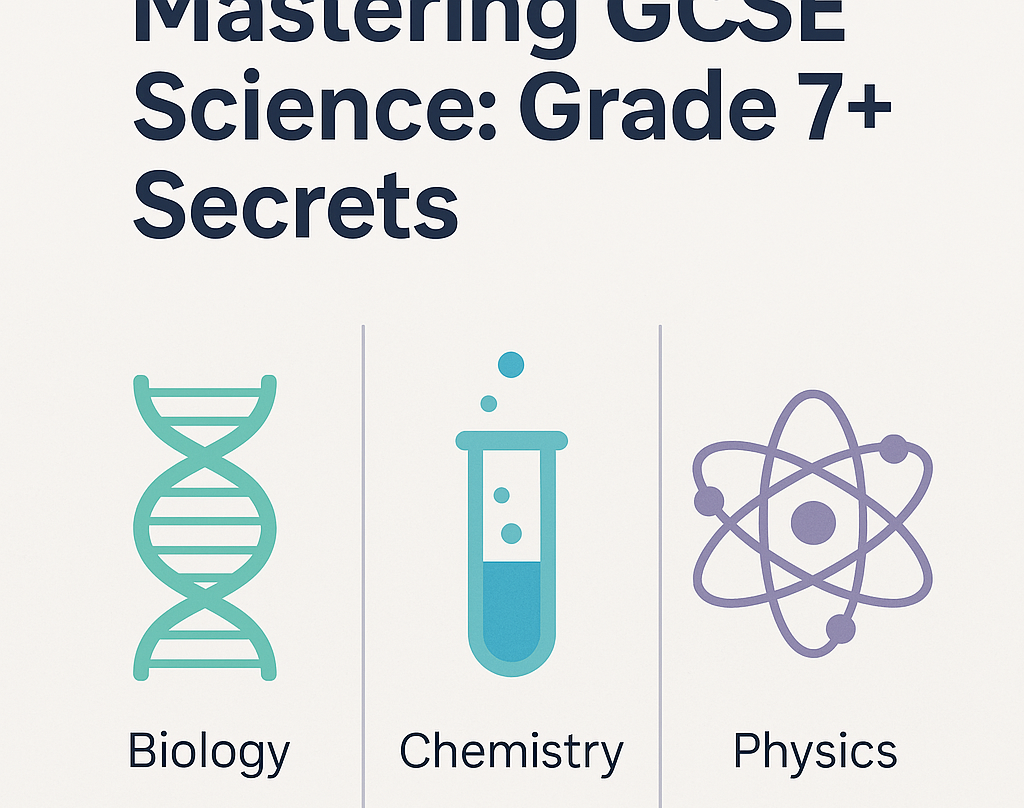Mastering the Top Grades: GCSE English Language Edition
A Grade 7+ Survival Guide (With a Splash of Sarcasm and a Whole Lot of Strategy)
Ah, GCSE English Language — the subject where “Just make it up” somehow becomes a skill. But let’s be honest, getting those top-end grades isn’t just about chucking in a metaphor and hoping for the best. Grade 7 and above? That’s a deliberate strategy. And lucky for you, we’ve got it right here.
Whether you're already a confident writer or you're just figuring out the difference between structural features and language techniques (hint: they’re not the same), this guide is your step-by-step roadmap to exam domination.
💡 What You’re Being Assessed On (And Why It’s Not Just “Good Spelling”)
Before we dive into the gold-dust techniques, let’s clarify what you’re actually being marked on:
📌
AO1 – Understanding: Spotting and summarising. Basically, being a detective.
📌
AO2 – Analysis: The why and how behind a writer’s choices. Hello, juicy marks.
📌
AO3 – Comparing viewpoints: The grown-up version of “spot the difference”.
📌
AO4 – Evaluation: Making a judgement and backing it up. (Yes, like a lawyer.)
📌
AO5 & AO6 – Creative writing: This is your flex moment. Vocabulary, structure, SPAG – all under the microscope.
✏️ Paper 1: Creative Writing – Your Inner Author’s Time to Shine
If you're aiming for a 7+, this is where you show off. Think storytelling with precision. No rambling. No describing the weather for 20 minutes. Be intentional.
Top Tips for Paper 1:
- 🔥 Plan like a pro: 5 minutes to jot a clear structure (beginning, twist, end). No structure = no 7.
- 🎯 Use cyclical structure: Start and end with the same image/idea. Examiners love it.
- 🌪️ Sentence variety: Mix it up. One short. One long. One a question. Boom – rhythm.
- 🎨 Show, don’t tell: Don’t say “he was scared.” Say “his hands trembled as he clutched the doorknob.”
Want more creative writing help? Check out our GCSE Survival Guide and Mock Reaction Blog for how to recover from "that" feedback.
📚 Paper 2: Writers’ Viewpoints and Perspectives – The Real Analysis Zone
Now we're into non-fiction — and this is where students think it’s easier. Spoiler: it’s not.
Top Tips for Paper 2:
- 🔍 Skim read with purpose: What’s the tone? The topic? The agenda?
- 🧠 Sophisticated comparison: Not just “Text A is formal, Text B is informal.” Get deep. Think audience and context.
- 🛠️ Use the right tools: Language features (metaphor, direct address, repetition) AND structural features (contrast, tone shift, paragraphing).
- 💬 High-level commentary: Say “This suggests the writer is appealing to…” rather than “It sounds nice.”
✨ Creative Writing Task: How to Level-Up from “Okay” to “Outstanding”
Let’s talk AO5 and AO6 – aka, your written communication. This is the only part of the paper where you are the writer.
Golden hacks:
- Use a powerful opening – a sentence that punches.
- Create a character with depth – even in a short story, we need to care.
- Work on your paragraphing – change pace, create suspense.
- Be ruthless with SPAG (Spelling, Punctuation and Grammar) – a stray comma can cost you.
🔄 Practice With Purpose: What Actually Works
We’re not just going to shout “revise more” at you. We believe in deliberate practice.
Here’s how to use your time wisely:
- ✍️ Past papers under timed conditions – non-negotiable.
- 🎯 Mark your own answers using the AQA mark scheme – know what they’re looking for.
- 🎥 Watch top-grade example breakdowns on YouTube – then steal their style.
- 💬 Get feedback, and actually use it – don’t just skim and move on.
🔗 Other Blogs You’ll Love
- How to Revise: A Survival Guide
- Reacting to Your Mock Results
- When’s the Best Time to Start Tuition? (Spoiler: Now.)
👏 Final Thoughts
GCSE English Language isn’t about writing flowery sentences for the sake of it. It’s about smart strategy, precise planning, and letting your voice shine through.
With the right guidance, revision strategies, and a bit of cheeky exam technique, that elusive Grade 7+ is absolutely within reach.
And if you need help? That’s where we come in 💬










